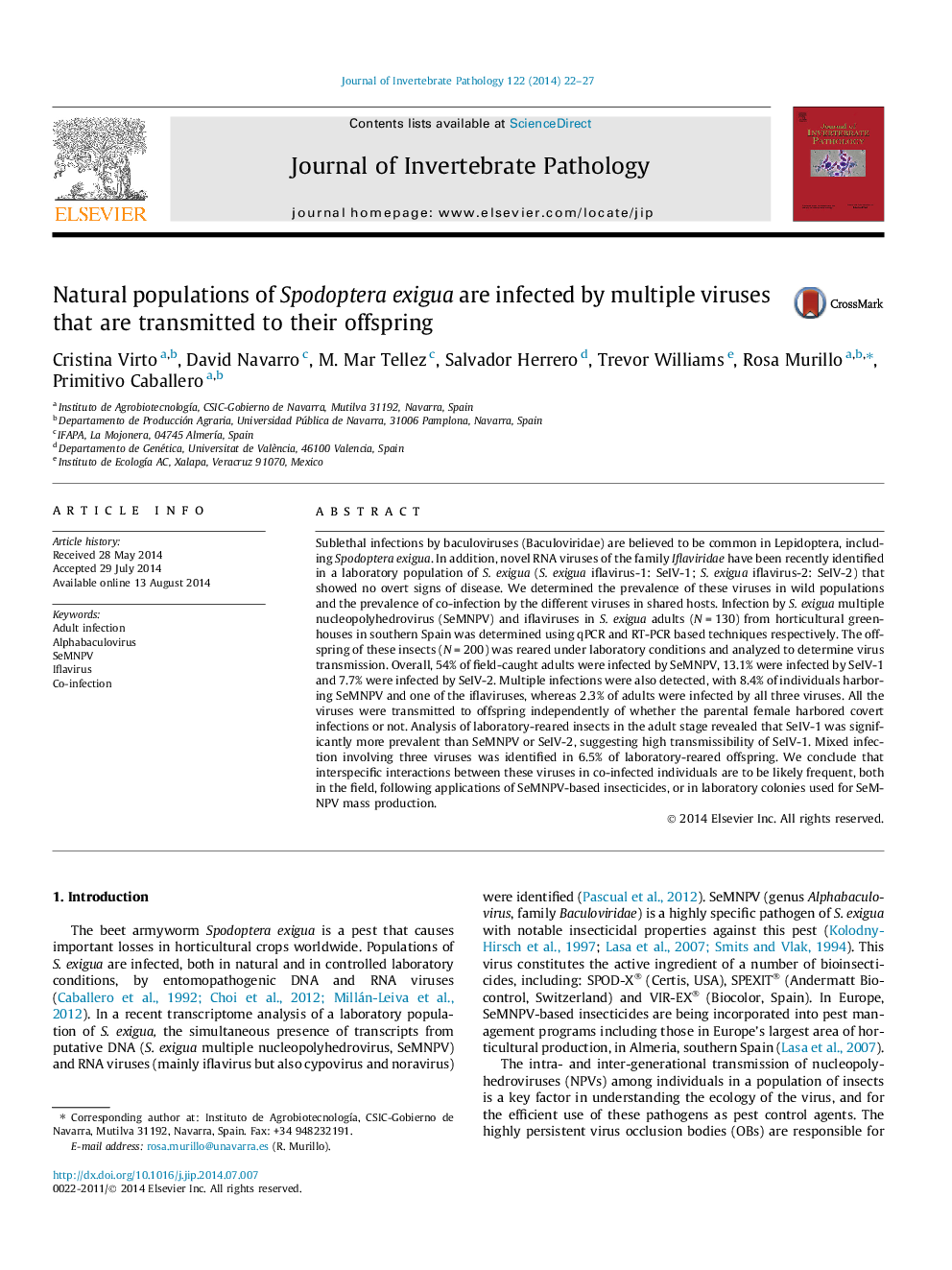| Article ID | Journal | Published Year | Pages | File Type |
|---|---|---|---|---|
| 6389442 | Journal of Invertebrate Pathology | 2014 | 6 Pages |
â¢High levels of covert infections in field collected moths.â¢NPV and iflaviruses were transmitted to their offspring.â¢Iflavirus more frequent than NPV in offspring.â¢Prevalence of infection not affected by sex.
Sublethal infections by baculoviruses (Baculoviridae) are believed to be common in Lepidoptera, including Spodoptera exigua. In addition, novel RNA viruses of the family Iflaviridae have been recently identified in a laboratory population of S. exigua (S. exigua iflavirus-1: SeIV-1; S. exigua iflavirus-2: SeIV-2) that showed no overt signs of disease. We determined the prevalence of these viruses in wild populations and the prevalence of co-infection by the different viruses in shared hosts. Infection by S. exigua multiple nucleopolyhedrovirus (SeMNPV) and iflaviruses in S. exigua adults (NÂ =Â 130) from horticultural greenhouses in southern Spain was determined using qPCR and RT-PCR based techniques respectively. The offspring of these insects (NÂ =Â 200) was reared under laboratory conditions and analyzed to determine virus transmission. Overall, 54% of field-caught adults were infected by SeMNPV, 13.1% were infected by SeIV-1 and 7.7% were infected by SeIV-2. Multiple infections were also detected, with 8.4% of individuals harboring SeMNPV and one of the iflaviruses, whereas 2.3% of adults were infected by all three viruses. All the viruses were transmitted to offspring independently of whether the parental female harbored covert infections or not. Analysis of laboratory-reared insects in the adult stage revealed that SeIV-1 was significantly more prevalent than SeMNPV or SeIV-2, suggesting high transmissibility of SeIV-1. Mixed infection involving three viruses was identified in 6.5% of laboratory-reared offspring. We conclude that interspecific interactions between these viruses in co-infected individuals are to be likely frequent, both in the field, following applications of SeMNPV-based insecticides, or in laboratory colonies used for SeMNPV mass production.
Graphical abstractDownload full-size image
